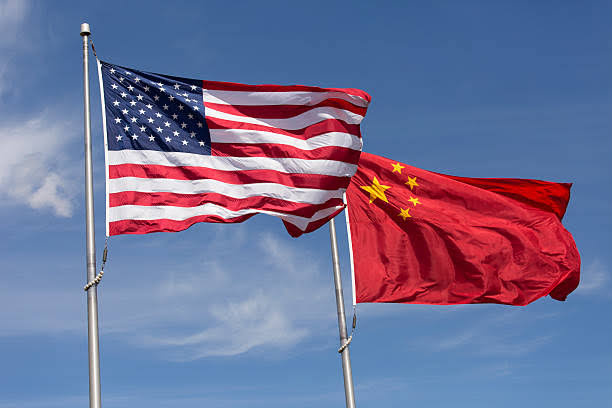China announced on Friday that it is reviewing a U.S. proposal for negotiations over ongoing trade tariffs but emphasized that any talks must begin with the United States lifting its punitive levies.
U.S. tariffs, some as high as 145% on Chinese imports, came into effect in April, prompting Beijing to retaliate with tariffs of up to 125% on American goods. High-tech products like smartphones, semiconductors, and computers were temporarily exempted by the U.S.
U.S. President Donald Trump recently claimed that China had expressed interest in talks and voiced optimism about reaching a deal. However, China’s Commerce Ministry clarified on Friday that it was the U.S. that initiated contact and said Beijing is “currently evaluating” the offer.
“If the U.S. wants to talk, it must demonstrate sincerity, correct its wrong practices, and cancel unilateral tariffs,” the ministry stated. It warned that continuing the current stance would only deepen mistrust. “Saying one thing and doing another, or resorting to coercion disguised as negotiation, will not succeed,” it added.
Wu Xinbo, head of the Center for American Studies at Fudan University, echoed this sentiment, saying that while the U.S. seeks swift negotiations, China requires concrete action before engaging. “Once the U.S. revokes tariffs, we can then discuss mutual concerns,” Wu said, pointing to trade imbalances and U.S. curbs on China’s tech sector.
A July deadline looms for dozens of countries to strike tariff deals with Washington to avoid even higher duties. China, meanwhile, remains firm in its position, with the Foreign Ministry recently declaring in a social media video: “We will never kneel down!”
“China’s stance has always been consistent,” the Commerce Ministry reiterated. “If it’s war, we fight to the end; if it’s talk, the door is open. The trade war was started by the U.S.”
Economic Strain and Global Impact
The trade tensions come amid signs of economic slowdown on both sides. Chinese officials admit export-dependent sectors are struggling. April data showed a contraction in factory activity, which Beijing blamed on rapid shifts in the global economy.
In the U.S., the economy unexpectedly shrank in the first quarter, partly due to an import surge sparked by Trump’s tariff plans. Additionally, the U.S. ended tariff exemptions on Chinese goods under \$800 in value, potentially affecting American consumer spending.
Despite shared economic pressure, analysts remain cautious about any breakthrough. “Neither side wants to appear weak,” said Ja-Ian Chong of the National University of Singapore.
Stephen Innes of SPI Asset Management noted that while Beijing’s remarks may signal an “olive branch,” true progress is uncertain. “On paper, both sides are waving détente flags. But beneath the surface, tensions remain. China’s demand for duty cancellations is a non-starter for the White House.”

